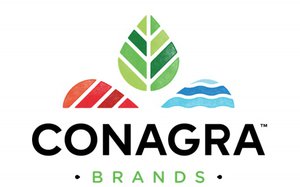
Over the past year, COVID-19 has tested the
resources of all CPG marketers while providing a silver lining of sorts.
Early on, maintaining production lines and on-shelf presence turned into a game of operational whack-a-mole rarely seen
across an entire industry.
On the plus side, many legacy and newcomer CPG brands gained new trial users given behavioral shifts like remote work and at-home cooking. Moreover, a spike in
ecommerce helped some companies advance their D2C capabilities by light years.
“We believe that what we are experiencing right now is the acceleration of product trial that in normal
times would take years and hundreds of millions of dollars,” is how Conagra Brands president and CEO Sean Connolly described the situation while addressing financial analysts on Jan. 7.
Conagra provides a useful snapshot of the past year because of its presence across the frozen, snacks and staples categories. Major brands include Banquet, Birds Eye and Healthy Choice; Duncan
Hines, Slim Jim and Orville Redenbacher’s; and Chef Boyardee, Hunt’s and Wish-Bone.
advertisement
advertisement
Like other CPG marketers juggling new-product innovation while trying to rationalize
SKUs—not to mention entire business units—Conagra had a plateful of challenges going into 2020.
For starters, the company was still integrating its approximately $11 billion
acquisition of Pinnacle Foods in the fall of 2018. Pinnacle brands like Birds Eye, Duncan Hines and Wish-Bone had long been struggling with sales and market share, while Conagra’s Hunt’s
and Chef Boyardee were languishing.
Conagra had already begun an upgrade of its frozen foods to appeal to the tastes and health expectations of younger consumers. In addition, Duncan Hines was
in the process of being reframed as a “sweet treat.”
Both moves would end up dovetailing nicely with the pandemic’s impact on shopping habits, as would previous investments
in ecommerce.
By Nov. 29, 2020 Conagra had increased its total household penetration by 14 basis points year over year and its share of categories by 26 basis points—led by staples, then
snacks, then frozen. Ecommerce had grown to 7.8% of the company’s retail sales from 5%.
On the innovation side, the company achieved its pre-pandemic goal of having 15% of annual retail
sales generated by products launched within the preceding three years. Standouts included additions to Marie Callender’s, Duncan Hines and Hungry Man.
More innovation is expected within
the Duncan Hines, P.F. Chang’s, Slim Jim and Snack Pack lines in the coming months.
Along the way, Birds Eye experienced long-sought sales recovery.
Citing data from IRI, Conagra
says that new-buyer household penetration for Birds Eye was up 3.5 percentage points in the 40 weeks ended Nov. 29. The percentage of new brand buyers who repeated Birds Eye purchases during the same
period was 64%.
In the first quarter of 2019, advertising spending for Birds Eye, Hunt’s and Marie Callender’s totaled $2.6 million, but increased to $4.2 million during the same
time period in 2020.
Now for the “stickiness thing,” as the company’s Connolly described the prospects for a continuation of elevated, at-home eating occasions.
He
had expressed confidence in October by citing data from the 2008 recession showing it was a catalyst for a 200-basis-point increase in at-home eating—from 80% to 82%—over the course of
four years.
“And what was more interesting about the first six months of this pandemic is the level of elevation we saw this year…was twice that of what we saw in 2008,”
Connolly said in his most recent presentation. “So there is previous evidence of stickiness post the adversity.”
In a December survey by Nielsen of approximately U.S. adults
released today, 64% of respondents indicated they will spend the same on groceries after a COVID-19 vaccine becomes widely available. Just 21% said they will spend more, while 15% will spend less.
Asked about out-of-home dining after a vaccine becomes widely available, 41% said they will spend the same as they have. About the same proportion said they will spend more (24%) as those who said
they will spend less (22%).